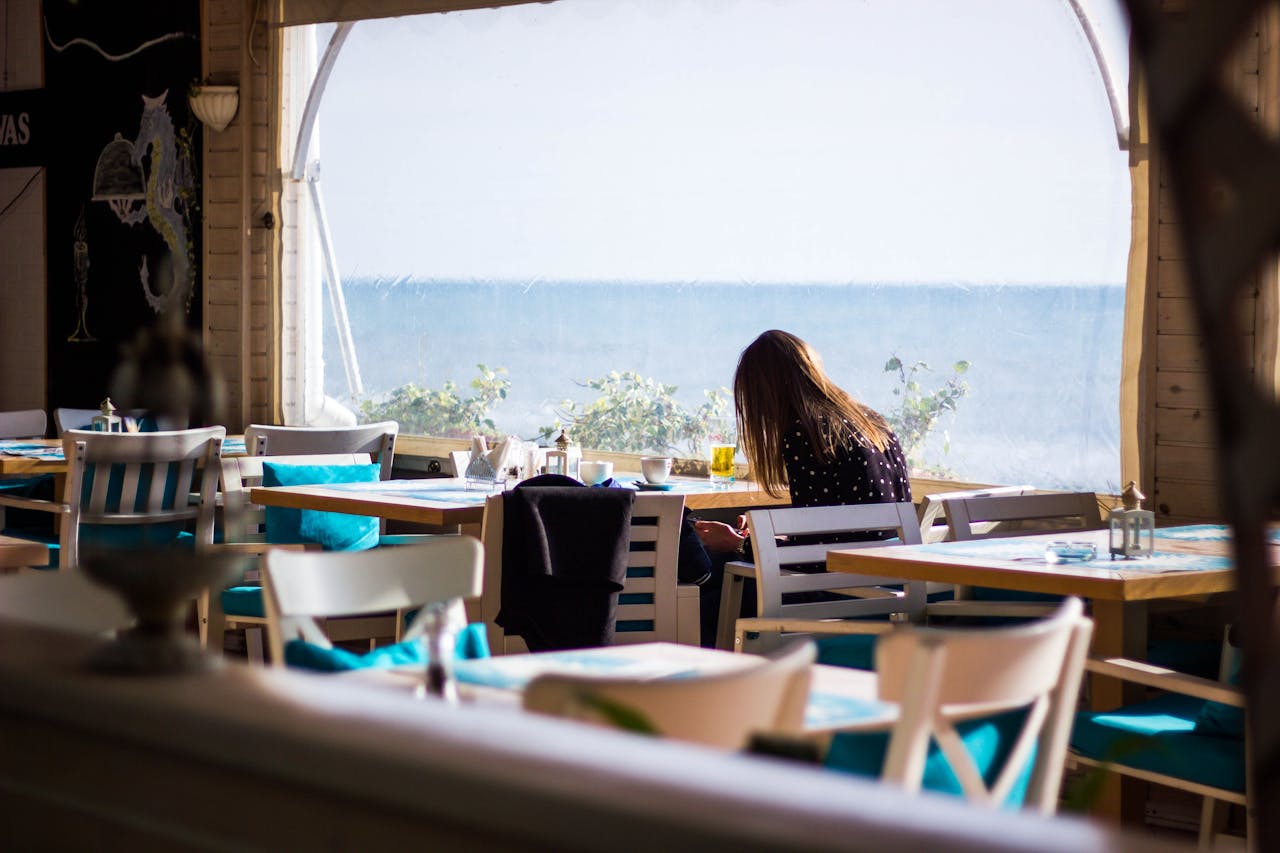In the bustling urban landscape, restaurants strive to offer not only palate-pleasing dishes but also an unforgettable dining experience that enchants all senses. One trend that has taken root in restaurant interior design is the incorporation of plants, specifically, vertical gardens. These green walls, as they are also referred to, are much more than a visual spectacle; they also contribute significantly to improving the air quality within the space. In this article, we’ll delve into the concept of vertical gardens, their benefits, and how they can transform the look and feel of restaurant interiors.
The Concept of Vertical Gardens
The term "vertical garden" might sound a little futuristic, but the concept is quite straightforward. Also known as living walls or green walls, vertical gardens are essentially gardens that grow vertically, employing a variety of techniques and designs.
Also to see : What innovations in coffee brewing can cafes adopt to attract more customers?
Vertical gardens are a prominent element in biophilic design, which seeks to integrate natural elements into urban and interior environments. This design philosophy acknowledges our innate desire to connect with nature and leverages it to create more holistic and healthy built environments. For restaurants, biophilic design can elevate the dining experience by offering patrons a vibrant, green oasis amid the urban jungle.
Vertical gardens can be integrated into both the exterior and interior designs of a restaurant. They can be freestanding installations or attached to walls, creating a green backdrop that is both visually striking and soothing. A myriad of plant species, from lush ferns to vibrant flowers and trailing creepers, can be used to create these gardens, offering endless design possibilities.
Also to read : What are the critical elements of a fire safety plan for a restaurant?
The Aesthetic Impact of Vertical Gardens
Green walls can dramatically transform the visual appeal of a restaurant. They lend a fresh, vibrant vibe to the interior, making the space more inviting and relaxing. Imagine dining under a cascade of greenery, surrounded by the calming sight and scent of plants. Such an environment can enhance the dining experience by making patrons feel more relaxed and connected to nature.
Moreover, vertical gardens offer a creative solution for utilizing vertical space, which is often underused in traditional interior design. They can be used to create focal points, hide unsightly features, or create a sense of separation within an open-plan space.
In terms of design, each vertical garden can be a unique piece of living art. The selection and arrangement of plants can be customized to complement the restaurant’s theme and color scheme. For instance, a sleek, modern restaurant might opt for a minimalist design with neat rows of succulents, while a more rustic establishment could go for a wild, jungle-like arrangement with a variety of species.
Improving Air Quality with Vertical Gardens
Beyond their aesthetic appeal, vertical gardens offer significant health and environmental benefits. Plants are natural air purifiers, absorbing carbon dioxide and releasing oxygen. They also absorb harmful pollutants like benzene, formaldehyde, and trichloroethylene, effectively purifying the air within the space.
This natural air purification can greatly enhance the indoor air quality in restaurants, which can often be compromised by cooking fumes, cleaning chemicals, and HVAC systems. A cleaner, fresher air environment not only contributes to the comfort and health of patrons and staff but can also subtly enhance the flavor and enjoyment of the food.
In addition to air purification, plants have been found to inhibit the growth of mold and bacteria, further contributing to a healthier indoor environment. Moreover, the natural humidity created by plants can help in reducing the dryness associated with air-conditioned spaces.
Creating Urban Green Spaces with Vertical Gardens
In densely populated urban areas, green spaces are hard to come by. Vertical gardens offer an innovative solution for introducing much-needed greenery into urban environments, without taking up valuable horizontal space. They can transform concrete facades into lush green landscapes, creating a visually pleasing contrast against the urban backdrop.
For restaurants in urban settings, vertical gardens can help create a unique identity and stand out from the competition. They not only beautify the exterior but also provide an inviting glimpse of the dining experience that awaits inside. Moreover, they can contribute to the broader urban ecosystem by providing habitats for insects and birds, and helping to reduce the urban heat island effect.
Enhancing the Dining Experience
Aesthetic appeal. Air purification. Creation of urban green spaces. The benefits of incorporating vertical gardens into restaurant interiors are manifold. But perhaps the most significant is the enhancement of the overall dining experience.
A restaurant is more than a place to eat; it’s a place to savor experiences and create memories. Interior design plays a crucial role in shaping these experiences. A well-designed vertical garden can create a unique ambiance that elevates the dining experience, offering patrons a sensory feast that goes beyond the menu.
The presence of greenery has been proven to have a positive impact on our mood and stress levels. Dining in such a serene, natural environment can make patrons feel more relaxed and content, enhancing their enjoyment of the meal. And let’s not underestimate the ‘Instagrammability’ factor – a stunning green wall can make a restaurant extremely photogenic, attracting patrons who love to share their experiences on social media.
Lastly, a commitment to green design can enhance a restaurant’s brand image, signaling a commitment to sustainability and wellness. This can resonate with environmentally conscious consumers, and help the restaurant carve a unique niche in the competitive dining market.
In conclusion, vertical gardens are more than just a design trend; they are a powerful tool for creating healthier, more enchanting spaces. By incorporating them into restaurant interiors, businesses can offer an elevated dining experience that delights the senses, promotes wellness, and makes a positive environmental impact.
The Influence of Vertical Gardens on Interior Design
The role of vertical gardens in interior design cannot be overstated. They represent a fusion of nature and architecture, embodying the principles of biophilic design. This design philosophy acknowledges the intrinsic human connection to nature and seeks to incorporate elements of the natural world into built environments. The result is a space that not only looks good but also promotes health and well-being.
In a restaurant setting, vertical gardens can be integrated directly into the walls or used as stand-alone features. They can act as room dividers, creating distinct zones in an open-plan layout. Or they can be used to conceal less appealing elements such as utility boxes or HVAC systems. By utilizing vertical space, these gardens offer a solution to space constraints, particularly in urban areas where square footage is at a premium.
Moreover, the choice of plants used in a vertical garden can be tailored to reflect the restaurant’s brand or theme. A minimalist, modern café might opt for a sleek design with succulents and air plants. In contrast, a rustic pub may choose a lush, leafy display with ferns and vines. The flexibility of vertical gardens allows for a wide range of design possibilities, adding an element of customization and personality to the space.
In addition to their aesthetic appeal, vertical gardens introduce a sense of dynamism into the restaurant’s interior. The living wall evolves with the change of seasons, offering a continually changing display that keeps the decor fresh and exciting. The presence of plants also enhances the indoor air quality and introduces a sense of tranquility, making the dining experience more enjoyable.
Conclusion: The Future of Restaurant Design
As we look to the future, it’s clear that vertical gardens are set to play a significant role in restaurant design. The trend of incorporating natural materials and elements into the built environment is showing no signs of slowing down. As more people become aware of the benefits of biophilic design, the demand for green spaces in urban settings is likely to increase.
Restaurants that incorporate vertical gardens into their interior design not only enhance the aesthetic appeal of their space but also positively impact the air quality. The presence of plants helps to filter out pollutants, contributing to a healthier indoor environment. This, in turn, enhances the dining experience, enticing patrons to return time and again.
Moreover, the use of vertical gardens is a testament to a restaurant’s commitment to sustainability and wellness. This resonates with consumers who are increasingly conscious of environmental issues and the impact of their choices. As such, restaurants with vertical gardens are likely to stand out in a competitive market.
In conclusion, vertical gardens offer a multitude of benefits in the context of restaurant interiors. They are a powerful design tool that can enhance the aesthetic appeal, improve air quality, and even contribute to an establishment’s brand identity. By taking advantage of the opportunities offered by vertical gardens, restaurants can create a unique dining experience that is not only pleasurable but also promotes well-being and sustainability.






